
September 05, 2024| Education, Environment
By: Patrick Krudop
Welcome back to our monthly series featuring species that call Lake Hopatcong home. In our last post, we talked about some of the common birds you might see preying on the fish found in our lake. It only feels right to shine the spotlight on those fish now and give them an issue of their own!
Despite approximately 90 species of fish being found in New Jersey, only about 60 of them are native to the state. Whether they be the bluegill, walleye, muskellunge, or perch, the fish that we see in Lake Hopatcong range in all forms of shapes, sizes, and colors. Now, let’s “dive” right in!
With their characteristic flat, round bodies, bluegills are among the most common fish in Lake Hopatcong. They’re easily recognized by the dark blue or black “ear” spot on their gill flap, although this isn’t where their name originates. The name “bluegill” comes from the blue hue on the sides of their heads.
In the food chain, bluegills occupy a lower rung, but their role is crucial. Without these sunfish, the populations of various predators would suffer. Larger fish like muskellunge, bass, and even bigger sunfish prey on them, as do birds like herons and kingfishers (as mentioned in our last article). Though bluegills are a non-native (but naturalized) species, they play an essential role in both the lake’s ecology and recreation for anglers.
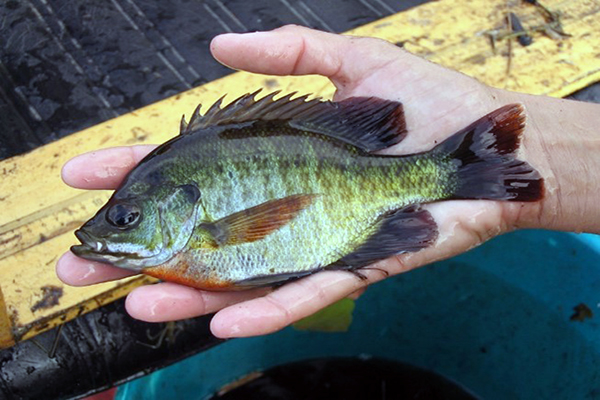 |
 |
With a name as vibrant as their appearance, rainbow trout are just as lively as you might expect. Their iridescent reds, pinks, and greens shimmer from head to tail (or should we say, fin?), making it clear how they earned their colorful name. Anglers know these fish as fierce fighters on the line, adding to their appeal.
In the wild, rainbow trout are opportunistic feeders, dining on everything from macroinvertebrates like stoneflies, mayflies, and crayfish to larger prey, including other fish. While saltwater rainbow trout can grow up to 4 feet long and weigh as much as 53 pounds, those in Lake Hopatcong typically reach about 20 inches and 8 pounds. Despite this average, Lake Hopatcong holds a special place in New Jersey's angling history—a state record was set here in 1988 with a 13-pound rainbow trout!
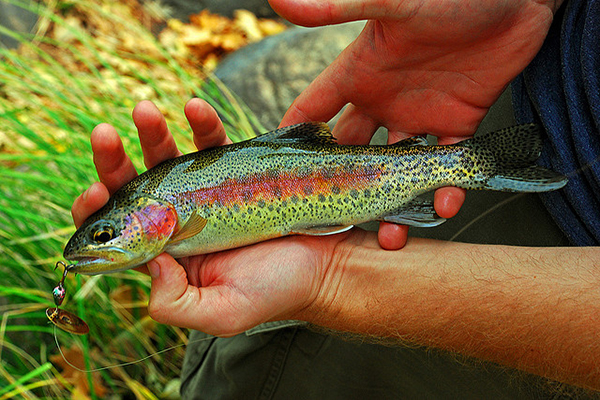 |
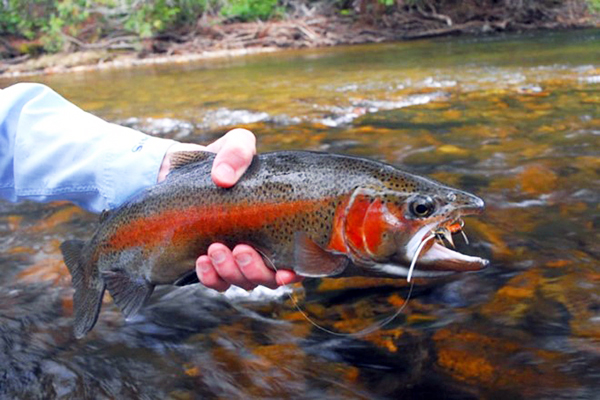 |
Next on our list is the channel catfish, another New Jersey state record holder caught right here at Lake Hopatcong. Our record-setting catfish weighed in at 33.3 pounds—impressive, but still not the largest they can grow! Channel catfish can typically reach up to 50 pounds, with the world record (caught in South Carolina) tipping the scales at 58 pounds. That’s a lot of fish!
Like other catfish, channel cats have the defining “whiskers” that give them their name. These whiskers, or barbels, are more than just a defining feature—they play a crucial role in the fish’s survival. Channel catfish have an extraordinarily sensitive sense of smell and taste, with taste buds covering their entire body (imagine being able to taste foods with your fingers!?). Remarkably, their whiskers are packed with around 25 taste buds in every square millimeter. To put that in perspective, the average human thumb has an area of about 1,000 square millimeters, which would be the equivalent of 25,000 taste buds on just your thumb! This unique adaptation earns them the nickname “the swimming tongue,” as it helps them navigate the dark, murky bottoms of lakes to find their next meal.
 |
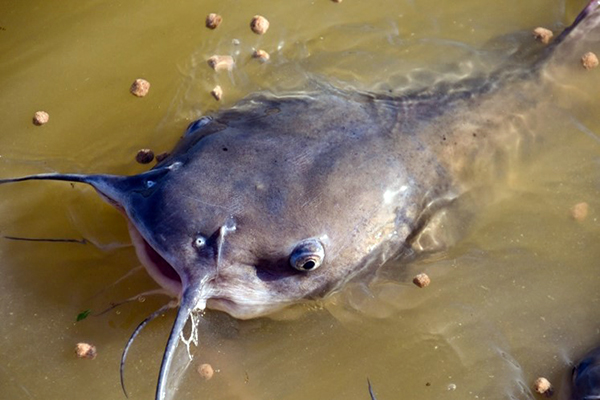 |
Another non-native species that has become a staple in the region, particularly among anglers, is the largemouth bass. These fish can grow large enough to become the apex predators in their local ecosystems, with their only threats being humans and large raptors. While most animals are opportunistic feeders, it’s rare to see even great blue herons or other piscivorous birds hunting adult largemouth bass.
With an average length of 16 inches (and a maximum length that can exceed 30 inches), largemouth bass prey on anything smaller than themselves, sometimes swallowing prey up to 50% of their body length. In New Jersey, the northern variant of this species typically lives about 16 years, reaching around 5 pounds by the time they’re 8 years old. Given their size, longevity, and predatory nature, it’s easy to see why largemouth bass have become a favorite in the fishing community.
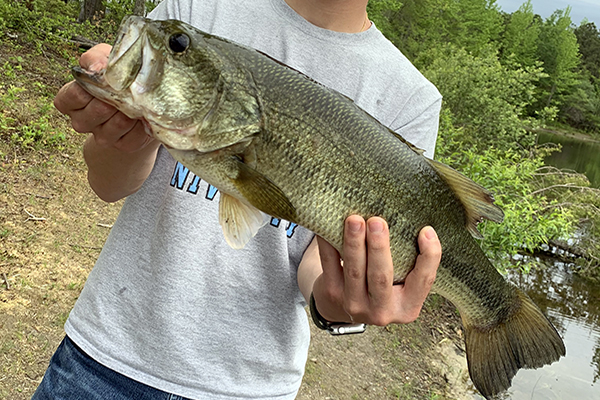 |
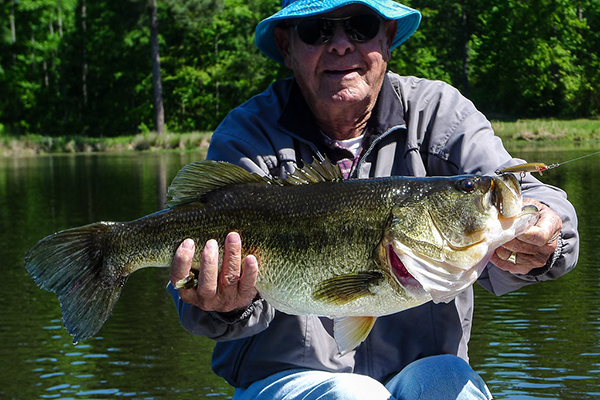 |
The yellow perch is a smaller relative of the walleye, easily recognized by its long, slender body, distinctive black stripes lining their bodies, and segmented dorsal fin (the one running along its spine). While yellow perch typically feed on smaller prey like zooplankton, they’re also known to eat other fish and anything else that can fit in their mouth. Their esophagus is remarkably flexible, allowing them to adjust mid-swallow, which enables them to consume a variety of prey as long as it fits.
Yellow perch can live up to 10 years, with adults generally ranging 4–10 in. in length. The world record for a yellow perch is 4 lbs. 3 oz., caught in May 1865 in Bordentown, New Jersey, by Dr. C. Abbot. It is the longest-standing record for a freshwater fish in North America!
Well known to any ice fisherman, perch tend to school in large numbers, providing a fun experience for any level of angler. Interestingly, of the common species we’ve discussed today, the yellow perch is the only one that is a true New Jersey native.
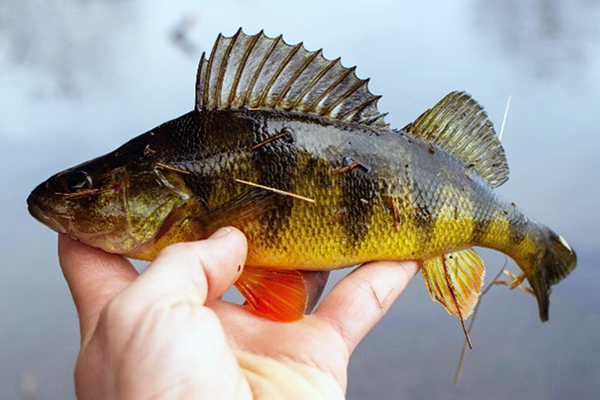 |
 |
At Lake Hopatcong, you’re likely to encounter many of the fish species highlighted today. Whether you’re a seasoned angler or simply curious about local wildlife, there’s always something new to discover about the fascinating creatures that call the lake home. Every footprint (or fin print), from the smallest to the largest, contributes to the vibrant life of Lake Hopatcong. After all, even the smallest presence can make a big impact if we allow it.
I hope you enjoyed reading about some of our native fish species at Lake Hopatcong, and learned a thing or two. If you have any pictures of wildlife on Lake Hopatcong, or any other type of critter you would like to see highlighted, please feel free to send them to info@lakehopatcongfoundation.org so that we can continue delivering creature features!
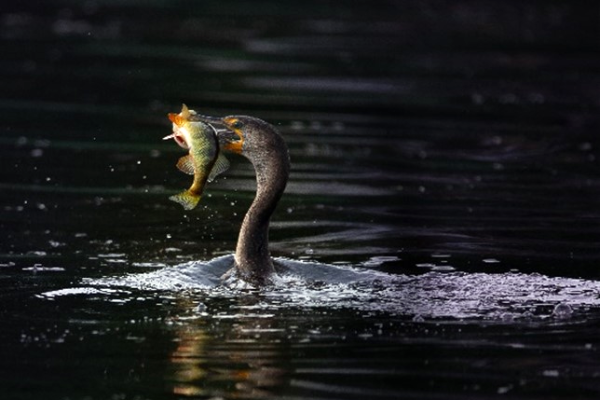
August 01, 2024
Education, Environment
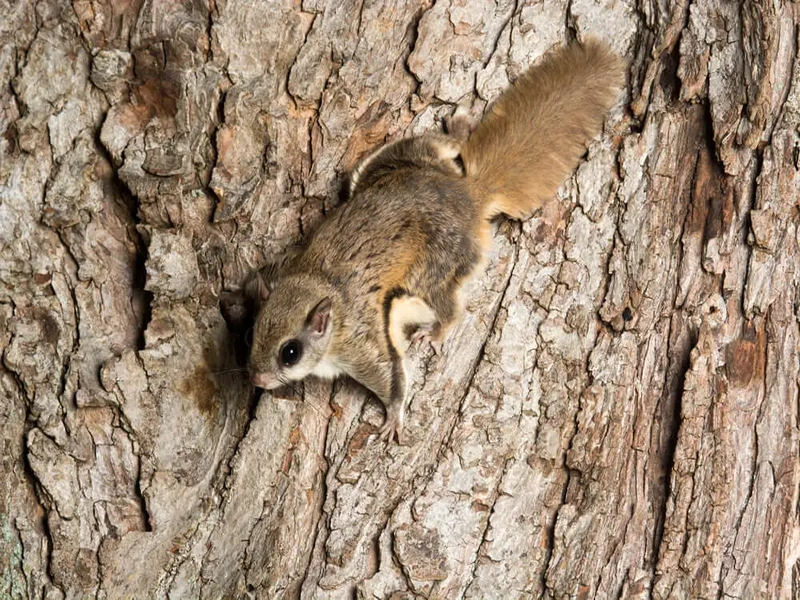
October 04, 2024
Education, Environment

October 21, 2024
Education, Environment